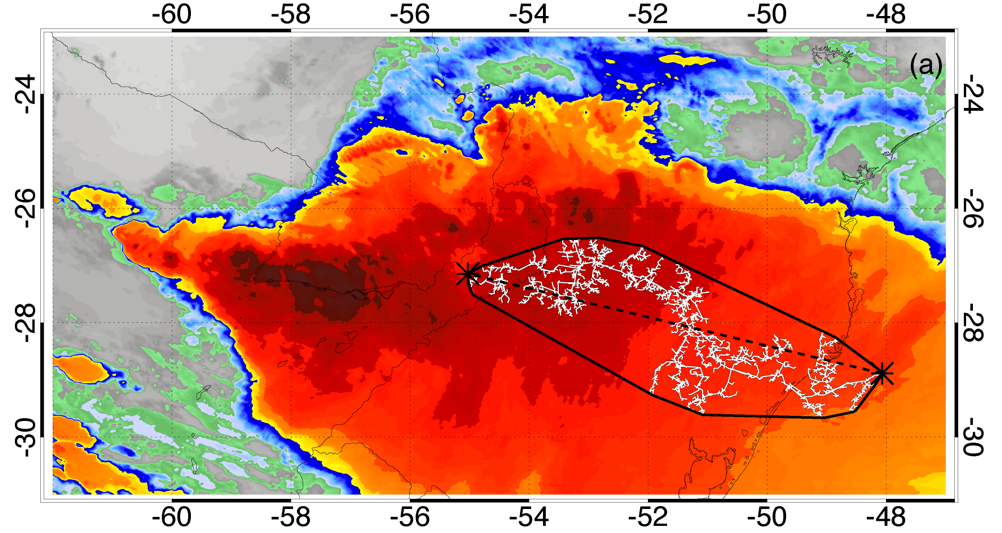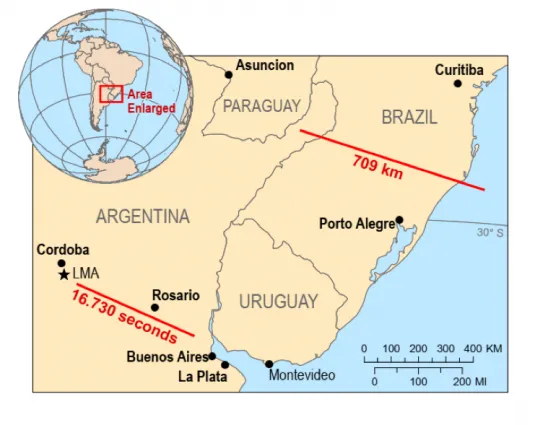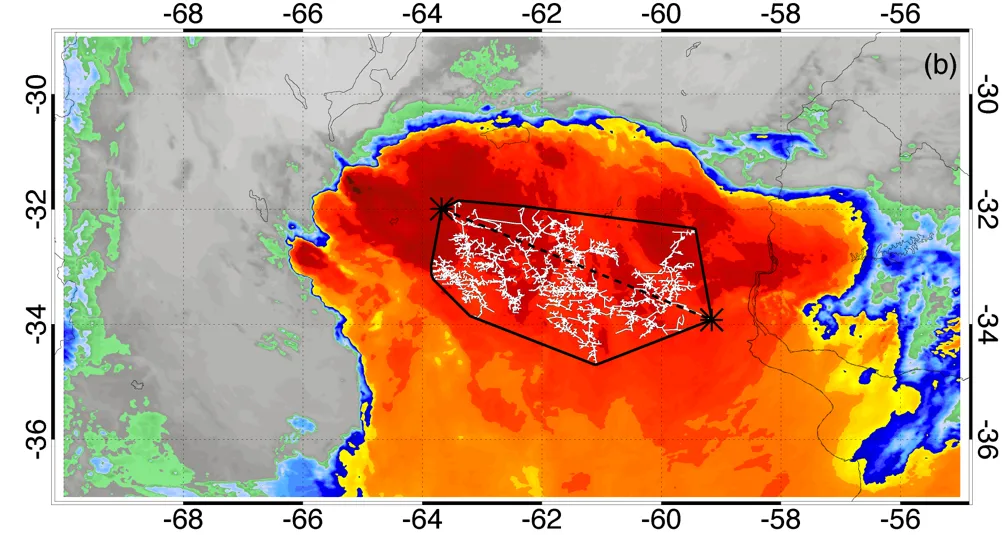Record-Breaking Lightning Bolts Spark Excitement
Officials confirmed two ‘megaflash’ lightning bolts in Brazil and Argentina that struck down previous world records
/https://tf-cmsv2-smithsonianmag-media.s3.amazonaws.com/filer/f8/41/f841b09f-1c77-4381-8a87-4a4c3152bb1d/lightning_over_sao_paolo.jpg)
On October 31, 2018, a spidery web of lightning unfurled over Brazil, stretching 440 miles across the sky—a length roughly equivalent to the distance between Boston and Washington, D.C. The colossal flash set the record for longest-in-distance lightning strike recorded to date.
The electrifying event is one of two record-setting strikes recently confirmed by a World Meteorological Organization (WMO) committee, according to a statement. Another bolt lit up over northern Argentina on March 4, 2019, for a whopping 16.73 seconds, setting a record for the longest recorded duration of a lightning strike.
“These are mind-boggling, incredible extremes,” Randall Cerveny, a member of the WMO committee and a scientist at Arizona State University, tells Matthew Cappucci for the Washington Post’s Capital Weather Gang.
Researchers from the WMO used satellite imagery to confirm the record strikes. The team published their findings in the journal Geophysical Research Letters this month.
Lightning bolts result from a buildup of unbalanced electric charges in storm systems, according to NASA. Normally, the flashes measure just a few miles long and last for just one or two seconds, reports Cappucci.
“Megaflashes,” on the other hand, are complex webs of lightning that spread horizontally, sometimes for hundreds of kilometers, Doyle Rice reports for USA Today. As Cappucci reports, emerging research demonstrates that megaflashes might be more common than scientists once thought. The enormous flashes can also expand up to the size of the storm system that creates them—so the bigger the storm, the greater the potential for an enormous light show.
South America is prone to enormous mesoscale convective systems, which are networks of thunderstorms that can span up to 60 miles across in the summer. These kinds of huge storm networks create the ideal opportunities for huge lightning strikes, reports Cappucci.
Previously, the longest-in-distance flash record was held by a 199.7-mile-long flare in Oklahoma in 2007, reports Hannah Osbourne for Newsweek. The longest-in-duration record was held by one that flashed over Provence-Alpes-Côte d'Azur, France for 7.74 seconds in 2012.
Those previous records, confirmed in 2016, forced the WMO to reconsider how the organization defined lightning, as Jason Daley reported for Smithsonian magazine at the time. The organization changed the formal definition of lightning from a “series of electrical processes taking place within one second” to a “series of electrical processes taking place continuously,” to better describe the kind of long-lasting flashes being recorded.
As the WMO notes in its statement, the potential destructive power of megaflashes underscores the need for caution during major storms. The organization reminds people to follow the 30-30 rule: if the time between thunder and lightning is less than 30 seconds, go inside, and stay inside for at least 30 minutes after the last flash.
“Environmental extremes are living measurements of what nature is capable, as well as scientific progress in being able to make such assessments,” say Cerveny in the WMO statement. “It is likely that even greater extremes still exist, and that we will be able to observe them as lightning detection technology improves.”
/https://tf-cmsv2-smithsonianmag-media.s3.amazonaws.com/accounts/headshot/nora.png)





/https://tf-cmsv2-smithsonianmag-media.s3.amazonaws.com/accounts/headshot/nora.png)